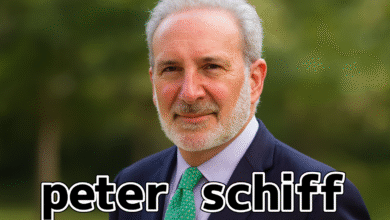Team Disquantified: Transforming Teamwork in the Digital Era

In today’s fast-paced and digitally driven world, businesses are continually seeking innovative team structures that offer agility, adaptability, and enhanced productivity. One such transformative concept is Team Disquantified. Although the term may appear unconventional, it introduces a groundbreaking model of teamwork designed to break away from rigid hierarchies and static roles. This article delves into the meaning, relevance, structure, implementation, and benefits of Team Disquantified, offering an in-depth guide for businesses ready to embrace the future of collaboration.
What Is Team Disquantified?
Team Disquantified refers to a dynamic team model that eliminates fixed titles, roles, and hierarchical labels. Instead of binding employees to predefined responsibilities, this approach encourages them to contribute based on their skills, interests, and situational expertise. The team operates on a flexible, skill-based structure that values outcomes over job descriptions.
The key idea is to “disquantify” teams—remove quantified limitations such as job ranks, department labels, and formal reporting lines. It fosters an environment where people function as multifaceted contributors, not boxed into linear roles or labels.
The Origin and Etymology
The term Team Disquantified combines:
-
“Dis” – meaning removal or reversal
-
“Quantified” – measured by specific values or roles
So, Team Disquantified suggests the removal of rigid measurements used to define team members’ contributions or positions. The concept is influenced by frameworks like Agile, human-centered design, and holacracy—where work is organized around flexibility, shared leadership, and real-time collaboration.
Why Team Disquantified Matters Today
1. Rise of Remote and Hybrid Work
With the global shift toward remote and hybrid environments, traditional team setups have become obsolete. Team Disquantified offers a model that supports decentralization and asynchronous collaboration without the dependency on physical presence or fixed hierarchies.
2. Demand for Business Agility
Companies now must pivot quickly to remain competitive. A disquantified model lets teams reorganize and adapt swiftly, deploying specific skillsets as needed without procedural delays.
3. Employee Autonomy and Growth
Today’s workforce—especially younger professionals—craves autonomy, learning, and impactful work. In a Team Disquantified environment, employees can take on varied roles, explore interests, and grow dynamically within the organization.
Core Principles of Team Disquantified
-
Skill-Based Teaming
Employees are grouped based on the skills required for a project rather than department or title. -
Role Fluidity
Individuals might lead in one project and support another based on expertise. Roles shift with context. -
Outcome-Oriented Work
Team members are evaluated on the impact they deliver, not on how closely they stick to a job description. -
Situational Leadership
Leadership is not fixed; it rotates based on who has the most relevant knowledge or skills for a particular task.
Benefits of a Team Disquantified Model
-
Flexibility and Agility: Teams can realign rapidly to respond to changing business needs.
-
Maximized Talent Usage: Skills are matched to tasks, allowing individuals to bring their best to the table.
-
Increased Engagement: Autonomy and variety in roles boost motivation and creativity.
-
Accelerated Innovation: Cross-functional collaboration encourages fresh ideas and rapid execution.
-
Streamlined Decision-Making: Without excessive hierarchy, decisions are made faster and more efficiently.
Potential Challenges
While Team Disquantified offers many advantages, it’s not without challenges:
-
Role Ambiguity: Lack of defined roles may create confusion for some employees.
-
Accountability Issues: Without clear reporting lines, tracking responsibility can become difficult.
-
Onboarding Hurdles: New employees might struggle to navigate a non-traditional structure.
-
Leadership Resistance: Managers accustomed to hierarchy may resist changes that flatten authority.
Real-World Implementations
-
IDEO: The global design firm embraces team flexibility, forming squads based on project needs.
-
Spotify: Its “Squad” structure reflects disquantified values, promoting autonomous, mission-driven teams.
-
Valve Corporation: With no formal hierarchy, Valve lets employees choose their projects, a core principle of Team Disquantified.
How to Apply the Team Disquantified Approach
-
Map Skills Across the Team
Inventory everyone’s abilities, experiences, and interests to guide team formation. -
Create Project Pods
Set up flexible, goal-driven pods that reassemble based on the task at hand. -
Set Clear Metrics
Define key results and timelines to ensure accountability despite role flexibility. -
Promote Transparent Communication
Establish regular updates and open feedback channels to maintain team cohesion. -
Invest in Training and Mentoring
Support employees as they adapt to fluid roles and collaborative leadership.
Team Disquantified vs Traditional Teams
| Feature | Traditional Teams | Team Disquantified |
|---|---|---|
| Structure | Hierarchical | Flat and Flexible |
| Role Definition | Fixed | Dynamic and Fluid |
| Leadership | Permanent | Rotational/Situational |
| Collaboration | Department-Based | Cross-Functional |
| Evaluation | Task Completion | Outcome and Impact |
| Innovation Potential | Moderate | High |
| Employee Autonomy | Limited | High |
Team Disquantified is more than a trend—it’s a bold shift toward a new era of workplace collaboration. As technology accelerates and workplace expectations evolve, this model offers a compelling blueprint for innovation, engagement, and agility. While not every organization is ready to abandon traditional roles entirely, integrating disquantified principles can foster a more dynamic and empowered workforce.
The future of work is not about fitting people into boxes—it’s about unlocking their full potential by removing those boxes altogether.
Frequently Asked Questions (FAQs)
Q1: Is Team Disquantified similar to Agile?
No, while both models promote flexibility and collaboration, Team Disquantified removes rigid role definitions, whereas Agile is centered around iterative development.
Q2: Can traditional organizations adopt Team Disquantified?
Yes, but it requires cultural openness, leadership support, and revamped performance systems.
Q3: Which industries benefit most?
Tech, design, marketing, startups, and any field that values rapid innovation and cross-disciplinary teamwork.
Q4: How do you ensure accountability in such a model?
By setting clear deliverables, shared ownership, and regular progress check-ins.
Q5: Will this replace traditional team models entirely?
Not immediately. However, elements of Team Disquantified are increasingly being integrated into modern team management strategies.
Read also:Maximizing Growth with Business Insight Shopnaclo: A Smart Business Optimization Tool



